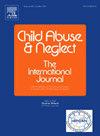Dimensions of perinatal and childhood adversities both merge and remain distinct
IF 3.4
2区 心理学
Q1 FAMILY STUDIES
引用次数: 0
Abstract
Background
Perinatal and childhood periods are sensitive windows of development wherein adversity exposure can result in disadvantageous outcomes. Data-driven dimensional approaches that appreciate the co-occurrence of adversities allow for extending beyond specificity (individual adversities) and cumulative risk (non-specific summation of adversities) approaches to understand how the type and timing of adversities affect outcomes.
Objective
With evolving recommendations on what should be important in adversity research, we sought to establish a data-driven framework that accounts for both type and timing of adversity by (1) replicating dimensions of childhood adversities, (2) determining whether perinatal adversities form unique dimensions and (3) identifying whether adversities during the perinatal and childhood periods overlap or remain distinct.
Methods
Using 6815 9–10-year-olds from the baseline Adolescent Brain Cognitive Development (ABCD) study, mixed graphical models were fit independently to childhood adversities and perinatal adversities, and simultaneously to perinatal and childhood adversities, to model relationships among adversities.
Results
Data-driven clustering approaches estimated dimensions of adversity within networks. Six dimensions of childhood adversities and five dimensions of perinatal adversities were observed. When considered simultaneously, dimensions of perinatal and childhood adversities both merged (e.g., parental circumstances during perinatal and socioeconomic status during childhood) and stayed independent (e.g., obstetric complications during perinatal and neglect during childhood) underscoring the importance of considering both type and timing when studying early life adversity.
Conclusions
These results highlight that it may be appropriate to study certain adversity dimensions independently, whereas for others considering the impact of timing and potential continuity in exposure is critical. Recommendations for adversity research are discussed.
求助全文
约1分钟内获得全文
求助全文
来源期刊

Child Abuse & Neglect
Multiple-
CiteScore
7.40
自引率
10.40%
发文量
397
期刊介绍:
Official Publication of the International Society for Prevention of Child Abuse and Neglect. Child Abuse & Neglect The International Journal, provides an international, multidisciplinary forum on all aspects of child abuse and neglect, with special emphasis on prevention and treatment; the scope extends further to all those aspects of life which either favor or hinder child development. While contributions will primarily be from the fields of psychology, psychiatry, social work, medicine, nursing, law enforcement, legislature, education, and anthropology, the Journal encourages the concerned lay individual and child-oriented advocate organizations to contribute.
 求助内容:
求助内容: 应助结果提醒方式:
应助结果提醒方式:


